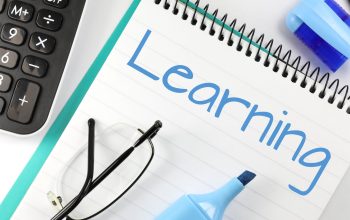Unlocking the Potential: Game-Based Learning in Education
Education has always been subject to innovations, constantly adapting to fit the ever-changing needs of our society. From the advent of blackboards to the introduction of interactive whiteboards, teachers have been eagerly embracing new tools to enhance the learning experience. One emerging trend that has the potential to revolutionize education is game-based learning. By integrating games into classrooms, educators can tap into the vast potential of this innovative approach to foster student learning and creativity. In this article, we explore the untapped possibilities of game-based learning and the transformative effects it can have on our educational landscape.
Unlocking the Untapped Potential: Exploring the Benefits of Game-Based Learning in Education
Game-based learning has emerged as an innovative and effective approach to education, offering a multitude of benefits that traditional methods often struggle to provide. By seamlessly blending entertainment and academics, it captures the attention and engagement of students like never before, opening up a world of untapped potential. One of the primary advantages of game-based learning is its ability to make learning enjoyable and interactive, turning mundane subjects into exciting quests to conquer. Through immersive virtual environments and captivating narratives, students become active participants in their own education, fostering a deep sense of ownership and motivation.
In addition to boosting engagement, game-based learning enhances crucial skills in students, ranging from problem-solving and critical thinking to collaboration and decision-making. By presenting challenges and obstacles that require analytical thinking, learners develop resilience and adaptability, unleashing their potential to overcome obstacles not just within the game, but also in real-life situations. Furthermore, games often offer real-time feedback and rewards, providing immediate and personalized assessments that help students track their progress and identify areas for improvement. This constant feedback loop empowers learners to take control of their learning journeys and build upon their strengths, while also identifying and addressing weaknesses.

Fostering Active Engagement: How Games Stimulate Student Learning and Creativity
In today’s digital age, educational games have emerged as a powerful tool for fostering active engagement in the classroom. These interactive experiences not only entertain students but also stimulate their learning and creativity in unique ways. Unlike traditional teaching methods, games provide an immersive environment that encourages exploration, problem-solving, and critical thinking, making learning a fun and rewarding experience.
One of the key benefits of incorporating educational games into the curriculum is their ability to cater to different learning styles. Whether a student is a visual learner, auditory learner, or kinesthetic learner, games can adapt to their individual needs. Through captivating visuals, captivating sound effects, and interactive elements, games provide a multi-sensory experience that enhances comprehension and information retention. Moreover, game-based learning allows students to actively participate in the learning process, empowering them to take ownership of their education and nurturing their creativity by encouraging experimentation and out-of-the-box thinking.
The dynamic nature of educational games also promotes collaboration and teamwork among students. By incorporating multiplayer modes or cooperative challenges, games create opportunities for students to work together towards a common goal, fostering communication, problem-solving, and social skills. Furthermore, the immediate feedback provided by games allows students to learn from their mistakes in a safe and supportive environment, boosting their confidence and motivation.
Enhancing Critical Thinking: Leveraging Game-Based Learning for Problem-Solving Skills Development
Traditional education methods often struggle to foster the development of critical thinking and problem-solving skills effectively. However, with the emergence of game-based learning, a new and exciting avenue has opened up to enhance these essential abilities in learners of all ages. By harnessing the power of gamification, educators can create immersive and engaging experiences that challenge students to think critically and solve complex problems.
In game-based learning, problem-solving is seamlessly woven into the fabric of interactive gameplay, allowing students to develop their analytical thinking skills while having fun. Through a series of interactive challenges, learners are encouraged to think outside the box, explore different perspectives, and adapt their strategies accordingly. This experiential learning approach not only encourages curiosity and creativity but also cultivates resilience and perseverance as students navigate through diverse obstacles in a safe and supportive virtual environment.
Game On: Practical Recommendations for Integrating Games into Educational Curricula
Are you looking for innovative ways to engage students in the classroom? Look no further! Incorporating games into educational curricula is an excellent strategy that not only enhances student learning but also makes education more enjoyable. Here are some practical recommendations to help you seamlessly integrate games into your teaching:
1. Align games with learning objectives:
- Start by identifying the key learning objectives of your curriculum.
- Choose games that align with these objectives and reinforce the subject matter.
- Ensure that the game mechanics and content effectively support the intended learning outcomes.
2. Provide clear instructions and objectives:
- Clearly communicate the rules, instructions, and learning objectives of the game to the students.
- Avoid overwhelming them with too much information at once—break it down into manageable chunks and scaffold their learning.
- Set specific objectives for students to achieve in the game, so they have a clear focus and purpose while playing.
By following these recommendations, you can turn your classroom into an engaging and interactive space where learning becomes an exciting adventure. Get ready to level up!
Final Thoughts
As we conclude our exploration into the fascinating realm of game-based learning, we find ourselves captivated by the immense potential and boundless opportunities it holds for education. The integration of games into classrooms has not only elevated traditional teaching techniques but has also ignited an innovative spark within students, encouraging their learning abilities to soar to unprecedented heights.
In this article, we delved into the transformative power of game-based learning, uncovering its ability to foster student learning and creativity. We saw how games engage learners on a level that textbooks and lectures simply cannot, providing an immersive and interactive environment that boosts comprehension and retention. The incorporation of gamification elements, such as leveling up, competition, and rewards, entices students to actively participate in their own educational journey, igniting their natural curiosity and driving them towards deep engagement.
Furthermore, we explored how games serve as a catalyst for creativity, unlocking the hidden potential within each student’s mind. As students navigate complex puzzles, make strategic decisions, and collaborate with their peers, they exercise critical thinking, problem-solving, and decision-making skills. The freedom to explore different paths and approaches within games cultivates a sense of autonomy and encourages students to think outside the box, ultimately nurturing their creativity in unexpected ways.
It is essential to acknowledge that game-based learning is not a replacement for traditional teaching methods but rather a powerful accompanying tool that enriches the educational experience. By embracing this novel approach, educators bridge the gap between technology and academia, opening up a world of possibilities in which students become active participants, rather than passive recipients, of knowledge.
As the world continues to evolve, embracing advancements in technology and innovation, it is crucial for education to keep pace. Game-based learning exemplifies this need perfectly, as it seamlessly marries entertainment with education, transforming classrooms into vibrant hubs of knowledge and discovery. The potential it holds is immense, revolutionizing education and fostering the skills necessary for success in the ever-changing landscape of the 21st century.
So, dear readers, let us embark on this delightful journey of game-based learning, where education knows no bounds, and creativity flourishes. Together, let us unlock the hidden potential within every student, preparing them to become the architects of a future that surpasses our wildest imagination.
In today’s world, where technology is ever-present and increasingly accessible, students learn differently than in previous generations. With the addition of games into the education system, educators have started to explore the potential of game-based learning to foster student learning and creativity.
Game-based learning is the utilization of games and game-like activities within an educational setting. This growing trend has become popular in recent years as educators have seen the potential of such activities to engage students and develop their problem-solving skills. With the use of gaming, students become more active in the learning process and can gain a better understanding of the content.
One of the most effective ways to integrate games into the learning process is through digital systems, such as internet-based programs and applications. Such systems allow for the development of personalized learning scenarios that can foster greater understanding. Through these scenarios, students have the opportunity to interact with the material and use their creative thinking skills. Additionally, they are able to communicate ideas and collaborate with peers in a more meaningful way.
In addition to digital systems, physical games and activities are also being incorporated into classrooms to enhance engagement and learning potential. Board games, card games, and even sports are all being used in classrooms to foster deeper learning and creativity. Such activities require students to use their problem-solving and critical thinking skills to develop strategies to overcome the challenges presented. By using their holistic thinking abilities, students can gain a better understanding of the material and put it to use in real scenarios.
Overall, game-based learning has the potential to revolutionize education. By implementing games into the educational setting, students can become more engaged and develop their problem-solving and critical thinking skills. Through such activities, students can gain a better understanding of the material and foster their creative thinking. Thus, game-based learning has the potential to help foster learning and creativity in students.



